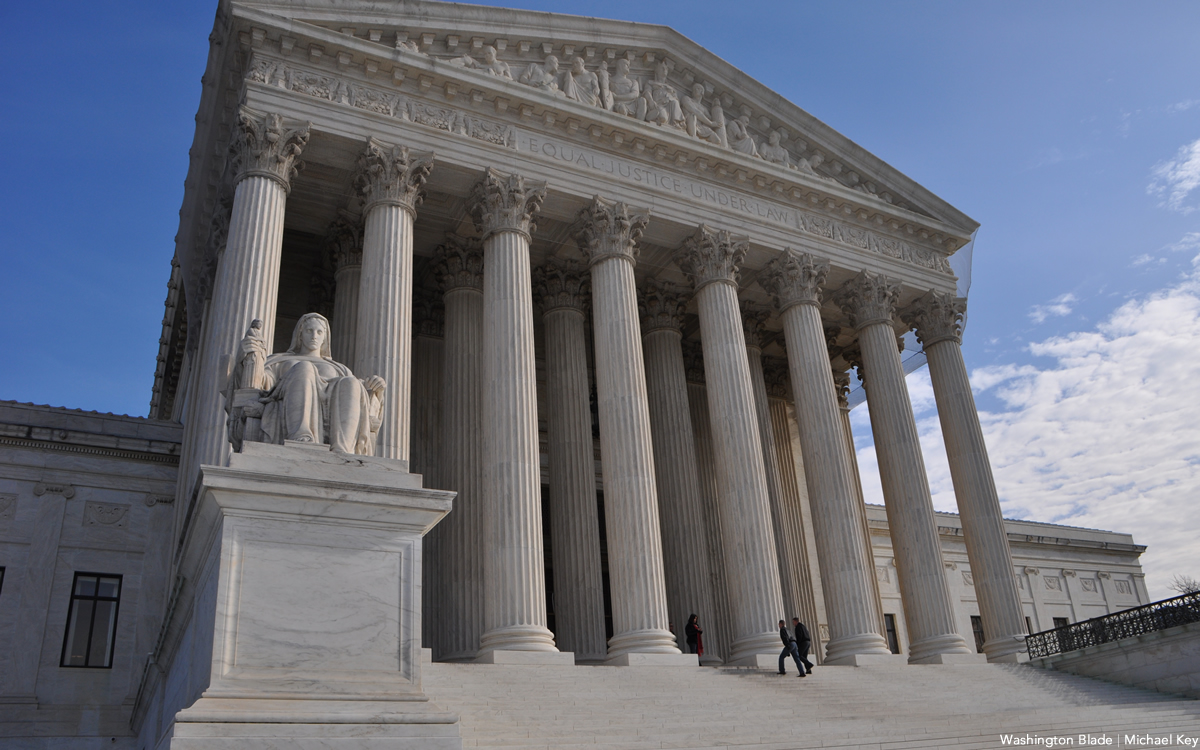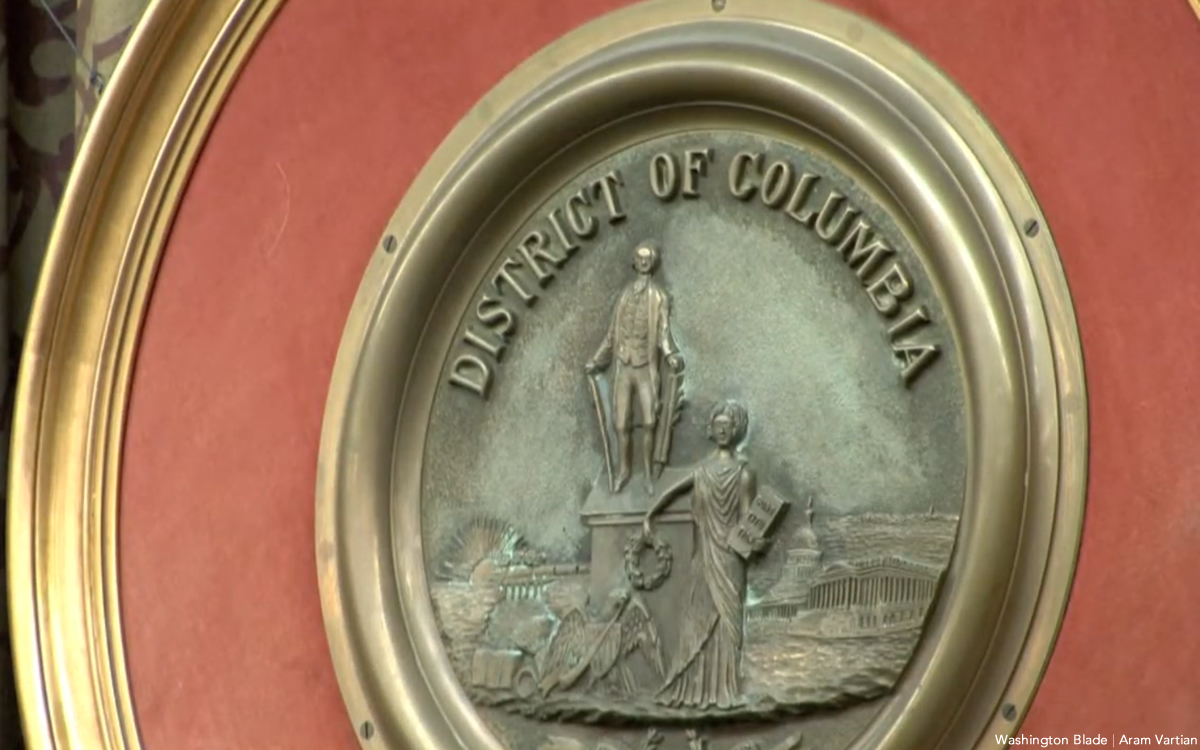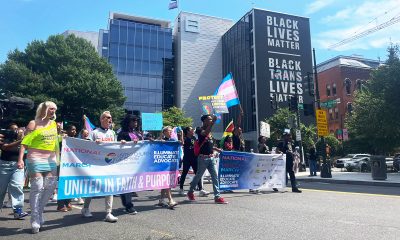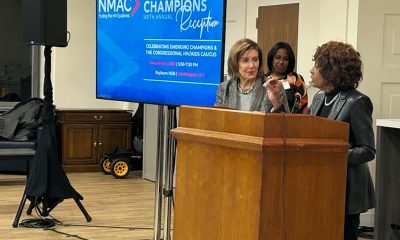Opinions
The harm of excluding queer history in schools
Stories of unapologetic LGBTQ+ figures inspire queer youth


The majority of high school students can rattle off facts about the lives and legacies of figures like Thomas Jefferson and Alexander Graham Bell, but can’t do the same for Marsha P. Johnson, Harvey Milk, or Leslie Feinberg. This is because in today’s school system, the contributions of key LGBTQ+ civil rights leaders and the movements they lead aren’t taught. This exclusion of queer history, coupled with the leaving out of LGBTQ+ inclusive sex education, affects all students in negative ways.
Being forced to seek information about people like us in the past and different sexual orientations as we figure ourselves out is incredibly alienating. Because I had never been given information about it anywhere, I thought of being queer as something that I shouldn’t and couldn’t be.
If I had been educated in school about these things, it would have been easier for me to recognize what I was feeling and realize that it was “normal” and natural for me. This is an experience that I share with many other LGBTQ+ youth, including my friends and classmates.
“I didn’t know it was possible to like girls, let alone like girls and boys, or to not be a girl or a boy until I did my own research on it,” says 16-year-old Willa, who is non-binary and pansexual. “It definitely hindered my journey in discovering myself.”
Fifteen-year-old JB Campbell, who is non-binary and biromantic, says: “There were many internal signs that would’ve made my journey easier had I been exposed to representation and had a chance to understand things that weren’t considered the norm.”
Furthermore, the representation of queer individuals in history who did groundbreaking things for the LGBTQ+ community will show students that people’s contributions to the world we live in now hold the same value as other historical events that shaped the way we live today. If we teach students about the pioneers of the queer rights movement who fought against police brutality at Stonewall and the HIV/AIDS epidemic, queer students are less likely to feel that their lives and experiences are less important because of who they are. Representation matters, and the stories of unapologetic LGBTQ+ figures inspire queer youth to be proud of who they are.
The narrative of the way that the LGBTQ+ community has been erased and devalued throughout history and how we’ve worked to overcome this inequity is a lesson that is beneficial to all students, according to teacher Colin O’Grady.
“When people see themselves represented in history, or in literature, it validates their sense of self-worth. It tells them that their lives matter and that they are valued members of society,” he says. “Revising the curriculum to be more inclusive, and teaching about the exclusion from historical narratives that occurred up until now also teaches all students a lot about the nature of how history is constructed and leads them to think critically about the narratives that they encounter.”
Students who are aware of the injustices faced by the queer community and how they shape our lives are better equipped to question inequality in their daily lives.
History being taught through a solely cisgender and heterosexual lense creates a stigma around queerness that affects cishet student’s perception and understanding of their LGBTQ+ peers. For students who grow up in homophobic and transphobic households, the only image they’re likely to have of the queer community is that we’re “weird” or “gross,” and this is harmful to both their queer peers and themselves. “I’m straight myself, but I have many LGBTQ+ friends and I want to do as much as I can for them,” says 16-year-old J. “I think if they had taught us about this in school, we’d definitely be more accepting.”
GLSEN’s 2017 National School Climate Survey found that 91 percent of LGBTQ+ students in Virginia secondary schools heard their classmates use the word “gay” in a derogatory way. Eighty-one percent had heard their classmates use homophobic slurs, and 73 percent had heard negative comments about transgender people.
If we’re taught from the beginning that queer people exist and are human beings who make valuable contributions to society just like everyone else, students who use the word “gay” as an insult and view being queer as something that’s unnatural and wrong would be less inclined to do so. If the etymology behind homophobic and transphobic slurs are included in the curriculum, cishet students who use these words against their queer peers would be likely to stop after they’re given the understanding of the true weight that they hold.
Only 15 percent of queer Virginia students who were surveyed by GLSEN in 2017 said that they were taught about the queer community in a positive light, and 3 percent said that the sex education they had received was LGBTQ+ inclusive.
As well as making queer students more comfortable, LGBTQ+ inclusive sex education would improve the safety of queer students, both physically and mentally.
According to a report by the Centers for Disease Control and Prevention, 70 percent of new HIV cases were made up of gay and bisexual men in 2017. Sixty-four percent of those new cases were men between the ages of 13-34. A 2003 study by the University of Washington found that almost half of women who had intercourse with women in the past year tested positive for herpes simplex virus type one.
In order to lower these numbers and give queer students comparable health benefits from their health classes, students need to be educated about Pre-Exposure Prophylaxis (PrEP), dental dams, and STDs that disproportionately affect those who engage in same-sex intercourse.
As it is today, the majority of sex education curriculums include no mention of sexual orientation or gender identity. When these things are brought up, they’re often portrayed in a negative way. This contributes to the frequent bullying and discrimination that queer students face due to the LGBTQ+ exclusive climate cishet-only sex education generates. The Center for American Progress reported that almost one-third of LGBTQ+ students have skipped class because they felt unsafe at school. The negative bias around being LGBTQ+ that is caused by only portraying queerness in a negative light makes queer students miss out on academic opportunities and fall behind in their education.
Excluding queer student’s history and sex education doesn’t do any good for them or their cisgender and heterosexual counterparts. The stories of strong LGBTQ+ leaders and how they broke barriers teach lessons that everyone can learn from, and normalize queer identities and relationships. Inclusive sex education gives queer students the same tools as their classmates to make informed and safe choices.
Maeve Korengold, 16, is a high school junior and Safe Space NOVA’s newest Student Ambassador.
Letter-to-the-Editor
Candidates should pledge to nominate LGBTQ judge to Supreme Court
Presidential, Senate hopefuls need to go on the record

As soon as the final votes are cast and counted and verified after the November 2026 elections are over, the 2028 presidential cycle will begin in earnest. Polls, financial aid requests, and volunteer opportunities ad infinitum will flood the public and personal media. There will be more issues than candidates in both parties. The rending of garments and mudslinging will be both interesting and maybe even amusing as citizens will watch how candidates react to each and every issue of the day.
There is one particular item that I am hoping each candidate will be asked whether in private or in public. If a Supreme Court vacancy occurs in your potential administration, will you nominate an open and qualified LGBTQ to join the remaining eight?
Other interest groups on both sides have made similar demands over the years and have had them honored. Is it not time that our voices are raised as well? There are several already sitting judges on both state and federal benches that have either been elected statewide or approved by the U.S. Senate.
Our communities are being utilized and abused on judicial menus. Enough already! Challenge each and every candidate, regardless of their party with our honest question and see if honest answers are given. By the way … no harm in asking the one-third of the U.S. Senate candidates too who will be on ballots. Looking forward to any candidate tap dancing!
Opinions
2026 elections will bring major changes to D.C. government
Mayor’s office, multiple Council seats up for grabs

Next year will be a banner year for elections in D.C. The mayor announced she will not run. Two Council members, Anita Bonds, At-large, and Brianne Nadeau, Ward 1, have announced they will not run. Waiting for Del. Norton to do the same, but even if she doesn’t, there will be a real race for that office.
So far, Robert White, Council member at-large, and Brooke Pinto, Council member Ward 2, are among a host of others, who have announced. If one of these Council members should win, there would be a special election for their seat. If Kenyon McDuffie, Council member at-large, announces for mayor as a Democrat, which he is expected to do, he will have to resign his seat on the Council as he fills one of the non-Democratic seats there. Janeese George, Ward 4 Council member, announced she is running for mayor. Should she win, there would be a special election for her seat. Another special election could happen if Trayon White, Ward 8, is convicted of his alleged crimes, when he is brought to trial in January. Both the Council chair, and attorney general, have announced they are seeking reelection, along with a host of other offices that will be on the ballot.
Many of the races could look like the one in Ward 1 where at least six people have already announced. They include three members of the LGBTQ community. It seems the current leader in that race is Jackie Reyes Yanes, a Latina activist, not a member of the LGBTQ community, who worked for Mayor Fenty as head of the Latino Affairs Office, and for Mayor Bowser as head of the Office of Community Affairs. About eight, including the two Council members, have already announced they are running for the delegate seat.
I am often asked by candidates for an endorsement. The reason being my years as a community, LGBTQ, and Democratic, activist; and my ability to endorse in my column in the Washington Blade. The only candidate I endorsed so far is Phil Mendelson, for Council chair. While he and I don’t always agree on everything, he’s a staunch supporter of the LGBTQ community, a rational person, and we need someone with a steady hand if there really are six new Council members, out of the 13.
When candidates call, they realize I am a policy wonk. My unsolicited advice to all candidates is: Do more than talk in generalities, be specific and honest as to what you think you can do, if elected. Candidates running for a legislative office, should talk about what bills they will support, and then what new ones they will introduce. What are the first three things you will focus on for your constituents, if elected. If you are running against an incumbent, what do you think you can do differently than the person you hope to replace? For any new policies and programs you propose, if there is a cost, let constituents know how you intend to pay for them. Take the time to learn the city budget, and how money is currently being spent. The more information you have at your fingertips, the smarter you sound, and voters respect that, at least many do. If you are running for mayor, you need to develop a full platform, covering all the issues the city will face, something I have helped a number of previous mayors do. The next mayor will continue to have to deal with the felon in the White House. He/she/they will have to ensure he doesn’t try to eliminate home rule. The next mayor will have to understand how to walk a similar tightrope Mayor Bowser has balanced so effectively.
Currently, the District provides lots of public money to candidates. If you decide to take it, know the details. The city makes it too easy to get. But while it is available, take advantage of it. One new variable in this election is the implementation of rank-choice voting. It will impact how you campaign. If you attack another candidate, you may not be the second, or even third, choice, of their strongest supporters.
Each candidate needs a website. Aside from asking for donations and volunteers, it should have a robust issues section, biography, endorsements, and news. One example I share with candidates is my friend Zach Wahls’s website. He is running for United States Senate from Iowa. It is a comprehensive site, easy to navigate, with concise language, and great pictures. One thing to remember is that D.C. is overwhelmingly Democratic. Chances are the winner of the Democratic primary will win the general election.
Potential candidates should read the DCBOE calendar. Petitions will be available at the Board of Elections on Jan. 23, with the primary on June 16th, and general election on Nov. 3. So, ready, set, go!
Peter Rosenstein is a longtime LGBTQ rights and Democratic Party activist.
Opinions
Lighting candles in a time of exhaustion
Gunmen killed 15 people at Sydney Hanukkah celebration

In the wake of the shooting at Bondi Beach that targeted Jews, many of us are sitting with a familiar feeling: exhaustion. Not shock or surprise, but the deep weariness that comes from knowing this violence continues. It is yet another reminder that antisemitism remains persistent.
Bondi Beach is far from Washington, D.C., but antisemitism does not respect geography. When Jews are attacked anywhere, Jews everywhere feel it. We check on family and friends, absorb the headlines, and brace ourselves for the quiet, numbing normalization that has followed acts of mass violence.
Many of us live at an intersection where threats can come from multiple directions. As a community, we have embraced the concept of intersectional identity, and yet in queer spaces, many LGBTQ+ Jews are being implicitly or explicitly asked to play down our Jewishness. Jews hesitate before wearing a Magen David or a kippah. Some of us have learned to compartmentalize our identities, deciding which part of ourselves feels safest to lead with. Are we welcome as queer people only if we mute our Jewishness? Are those around us able to acknowledge that our fear is not abstract, but rooted in a lived reality, one in which our friends and family are directly affected by the rise in antisemitic violence, globally and here at home?
As a result of these experiences, many LGBTQ+ Jews feel a growing fatigue. We are told, implicitly or explicitly, that our fear is inconvenient; that Jewish trauma must be contextualized, minimized, or deferred in favor of other injustices. Certainly, the world is full of horror. And yet, we long for a world in which all lives are cherished and safe, where solidarity is not conditional on political purity or on which parts of ourselves are deemed acceptable to love.
We are now in the season of Chanuka. The story of this holiday is not one of darkness vanishing overnight. It is the story of a fragile light that should not have lasted. Chanuka teaches us that hope does not require certainty; it requires persistence and the courage to kindle a flame even when the darkness feels overwhelming.
For LGBTQ+ Jews, this lesson resonates deeply. We have survived by refusing to disappear across multiple dimensions of our identities. We have built communities, created rituals, and embraced chosen families that affirm the fullness of who we are.
To our LGBTQ+ siblings who are not Jewish: this is a moment to listen, to stand with us, and to make space for our grief. Solidarity means showing up not only when it is easy or popular, but especially when it is uncomfortable.
To our fellow Jews: your exhaustion is valid. Your fear is understandable, and so is your hope. Every candle lit this Chanuka is an act of resilience. Every refusal to hide, every moment of joy, is a declaration that hatred will not have the final word.
Light does not deny darkness. It confronts it.
As we light our candles this Chanuka season, may we protect one another and bring light to one another, even as the world too often responds to difference with violence and hate.
Joshua Maxey is the executive director of Bet Mishpachah, D.C.’s LGBTQ synagogue.




















